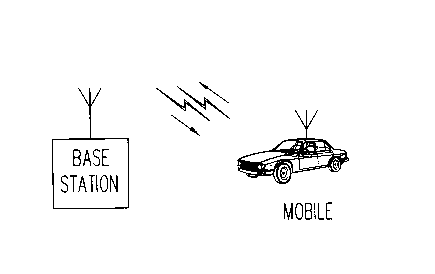Some of the information on this Web page has been provided by external sources. The Government of Canada is not responsible for the accuracy, reliability or currency of the information supplied by external sources. Users wishing to rely upon this information should consult directly with the source of the information. Content provided by external sources is not subject to official languages, privacy and accessibility requirements.
Any discrepancies in the text and image of the Claims and Abstract are due to differing posting times. Text of the Claims and Abstract are posted:
| (12) Patent Application: | (11) CA 2293854 |
|---|---|
| (54) English Title: | SIGNALING TO SUPPORT WIRELESS SERVICE REDIRECTION |
| (54) French Title: | SIGNALISATION EN SOUTIEN AU REACHEMINEMENT DU SERVICE SANS FIL |
| Status: | Deemed Abandoned and Beyond the Period of Reinstatement - Pending Response to Notice of Disregarded Communication |
| (51) International Patent Classification (IPC): |
|
|---|---|
| (72) Inventors : |
|
| (73) Owners : |
|
| (71) Applicants : |
|
| (74) Agent: | KIRBY EADES GALE BAKER |
| (74) Associate agent: | |
| (45) Issued: | |
| (22) Filed Date: | 2000-01-04 |
| (41) Open to Public Inspection: | 2000-07-11 |
| Examination requested: | 2000-01-04 |
| Availability of licence: | N/A |
| Dedicated to the Public: | N/A |
| (25) Language of filing: | English |
| Patent Cooperation Treaty (PCT): | No |
|---|
| (30) Application Priority Data: | ||||||
|---|---|---|---|---|---|---|
|
A selective Global Service Redirection mechanism allows a service provider,
for
instance, to instruct only CDMA2000 (MOB_P_REV = 6) mobiles to access specific
carrier that
is deployed to support advanced services known as 3G services. In another
embodiment,
data-only CDMA2000 mobiles are instructed to access specific carrier that is
optimized to support
high speed data services. Additionally, data-only CDMA2000 mobiles may be
instructed to
access a specific carrier that is optimized to support high speed data
services. Pre-CDMA2000
mobiles (MOB_P_REV < 6) are redirected by a conventional Global Service
Redirection
Message to another carrier, while CDMA2000 mobiles (MOB_P_REV => 6) are
instructed to
ignore this redirection.
Note: Claims are shown in the official language in which they were submitted.
Note: Descriptions are shown in the official language in which they were submitted.

2024-08-01:As part of the Next Generation Patents (NGP) transition, the Canadian Patents Database (CPD) now contains a more detailed Event History, which replicates the Event Log of our new back-office solution.
Please note that "Inactive:" events refers to events no longer in use in our new back-office solution.
For a clearer understanding of the status of the application/patent presented on this page, the site Disclaimer , as well as the definitions for Patent , Event History , Maintenance Fee and Payment History should be consulted.
| Description | Date |
|---|---|
| Inactive: IPC from PCS | 2022-09-10 |
| Inactive: IPC from PCS | 2022-09-10 |
| Inactive: IPC from PCS | 2022-09-10 |
| Inactive: First IPC from PCS | 2022-09-10 |
| Inactive: IPC from PCS | 2022-09-10 |
| Inactive: IPC expired | 2009-01-01 |
| Inactive: Dead - No reply to s.30(2) Rules requisition | 2004-03-09 |
| Application Not Reinstated by Deadline | 2004-03-09 |
| Deemed Abandoned - Failure to Respond to Maintenance Fee Notice | 2004-01-05 |
| Inactive: Abandoned - No reply to s.30(2) Rules requisition | 2003-03-10 |
| Inactive: S.30(2) Rules - Examiner requisition | 2002-09-09 |
| Application Published (Open to Public Inspection) | 2000-07-11 |
| Inactive: Cover page published | 2000-07-10 |
| Inactive: First IPC assigned | 2000-03-14 |
| Inactive: Filing certificate - RFE (English) | 2000-01-26 |
| Filing Requirements Determined Compliant | 2000-01-26 |
| Letter Sent | 2000-01-26 |
| Application Received - Regular National | 2000-01-26 |
| Request for Examination Requirements Determined Compliant | 2000-01-04 |
| All Requirements for Examination Determined Compliant | 2000-01-04 |
| Abandonment Date | Reason | Reinstatement Date |
|---|---|---|
| 2004-01-05 |
The last payment was received on 2002-12-30
Note : If the full payment has not been received on or before the date indicated, a further fee may be required which may be one of the following
Please refer to the CIPO Patent Fees web page to see all current fee amounts.
| Fee Type | Anniversary Year | Due Date | Paid Date |
|---|---|---|---|
| Registration of a document | 2000-01-04 | ||
| Request for examination - standard | 2000-01-04 | ||
| Application fee - standard | 2000-01-04 | ||
| MF (application, 2nd anniv.) - standard | 02 | 2002-01-04 | 2002-01-04 |
| MF (application, 3rd anniv.) - standard | 03 | 2003-01-06 | 2002-12-30 |
Note: Records showing the ownership history in alphabetical order.
| Current Owners on Record |
|---|
| LUCENT TECHNOLOGIES INC. |
| Past Owners on Record |
|---|
| GABRIELA MARIA ABRAMOVICI |
| MICHAEL DWAYNE CHAMBERS |
| SEMYON B. MIZIKOVSKY |
| YUEN-YIN L. KOO |